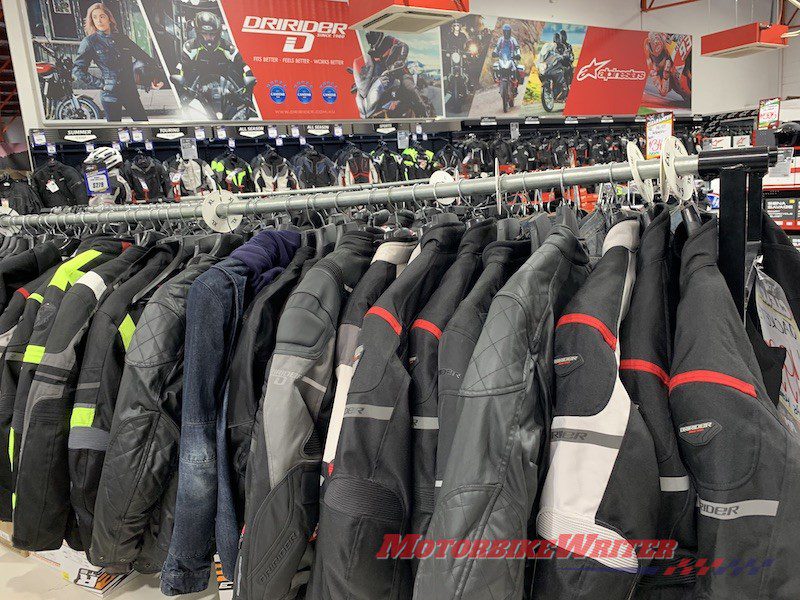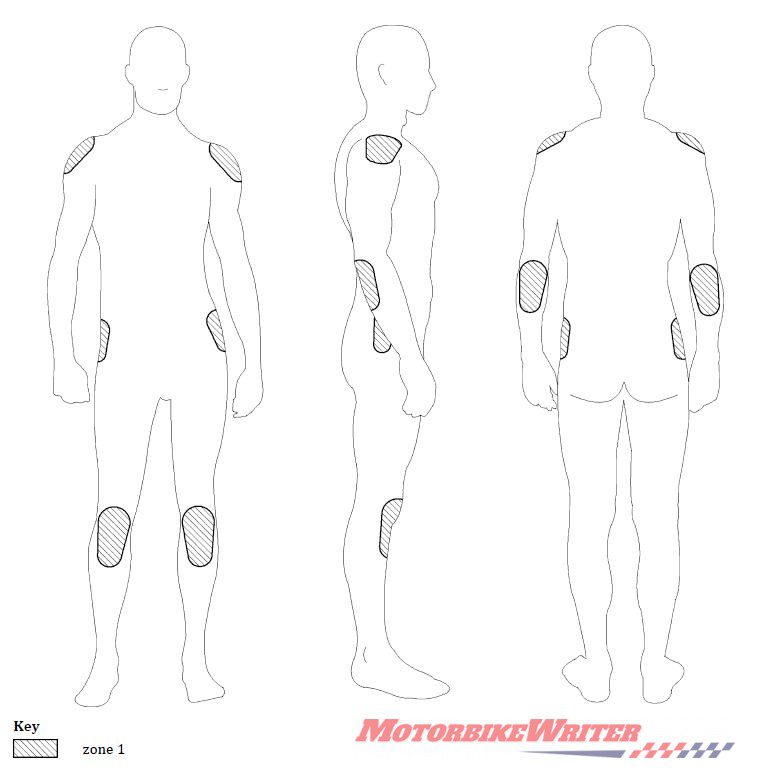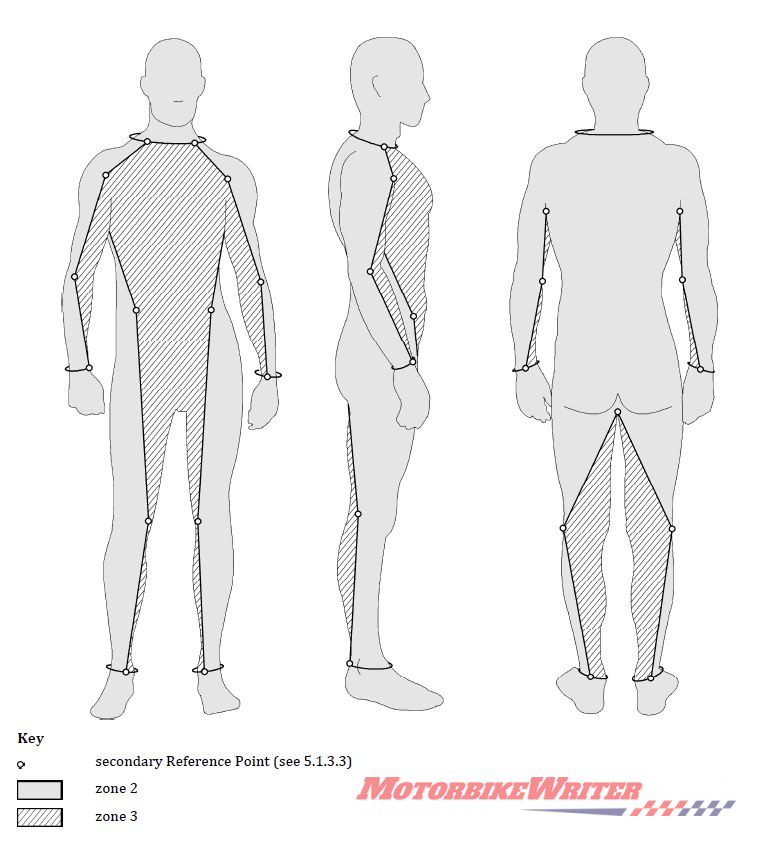Part 4 – Seam strength and risk zones.
Over the past seven years, Europe has developed a new clothing protection standard (EN17092).
We have asked Dr Chris Hurren to explain the new European standard and what it means for Aussie riders.
Dr Hurren is a research scientist at Deakin University in Geelong where he and his laboratory works on protective motorcycle clothing. He worked with Dr de Rome and others to produce the protocol that is used by MotoCAP for their testing regime.

This is the final in a four-part series explaining the new method for seam strength and new template for risk zones. Click here for Part 1, Part 2 and Part 3.
Clothing standard: Seam strength
Seam strength of jackets and pants under EN17902 is tested using the same method as used for gloves in the European Standards for motorcycle gloves – EN13594. The test involves pulling a seam apart using a tensile testing machine and measuring the force it takes for the break to occur. The failure mechanism of this test is slightly different to that of the hydraulic burst method used in EN13595 for jackets and pants, so manufacturers have had to change some seam styles to achieve a pass. Significant comparison testing done with other published garment research has shown that there is a reasonable relationship between the two tests and that the newly set pass criteria appears to be fit for purpose. The introduction of EN 17092 should see improved seams appearing in garments getting Class AAA ratings as these seam strengths are relatively high. As the majority of motorcycle clothing on the market has previously not been certified for seam strength achieving this standard should see an improvement in seams.
The other big change introduced into EN17092 is the modification of the injury risk zones from the well know four zone system developed by Dr Woods into a new three zone system.
Zone 1 is defined as an area of high risk of damage such as to impact, abrasion and tearing (figure 1 a). This is still the location of impact protectors and higher performing protective materials. Zone 2 is defined as an area of moderate risk of damage to abrasion and tearing (figure 1b). Zone 3 is classed as an area of low risk to damage such as tearing.
It is unclear why the standard has downgraded the higher risk to abrasion areas of the buttocks, sides of the leg and parts of the arm. This appears to be contrary to scientific consensus validated by research both in Australia and abroad that show these areas to be of a high risk. An example of this is the Class AAA garment requirements for abrasion. The very small zone 1 area must meet the 120km/h AART test speed whereas the bulk of the body that is identified as zone 2 must achieve 75km/h. This is similar with the Class AA garment where the Zone 1 area must meet 70km/h and the Zone 2 area 45km/h. Considering that a piece of denim can achieve 75km/h this means that the minimum abrasion protection levels of the bulk of the Class AAA garment is relatively low and the Class AA even lower.
Images showing the new three Zone system (EN17092:2020)
There is also a different risk zone template for the AAA garment compared to the other garments. This increases the Zone 1 area for abrasion and tearing risk to cover some of the buttocks and crotch area. While this is an improvement in providing protection for some of the higher risk areas of the lower body it does not cover all the previously well-defined risks. It is also unclear why this injury risk is only present in the AAA garments and not in any of the other garment classes.
Hopefully this article has helped you to better understand the new standard. Enjoy your ride.




